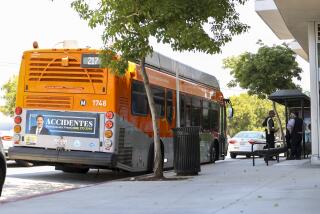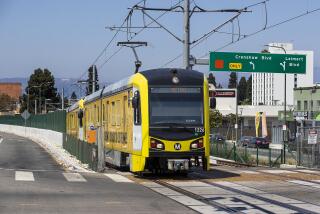Editorial: Who is going to pay for the bullet train to L.A.?
The California High Speed Rail Authority’s newly revised business plan faces up to a hard truth: Money is tight. If the agency is going to complete the first leg of a commercially viable bullet train on time and on budget, it has to build the first segment in Northern California and postpone the more difficult route over the Tehachapi Mountains to Los Angeles. That may be a reasonable shift given the funding constraints. But left unsaid in the draft 2016 business plan is how exactly the authority will get the money to build the bullet train to Southern California.
That is a big worry. High-speed rail is supposed to be the backbone of a faster, cleaner, more modern transportation system that connects the state’s major population centers. The new plan, however, provides a clear path to building the line just from downtown San Jose to the Central Valley, which it says it will complete by 2025. In fact, the authority hasn’t secured the money to build the route between two sizable cities; instead, the funds and the rail line would peter out in some farmland near Shafter, about 20 miles north of Bakersfield. The authority is trying to get another $3billion from the federal government to extend the first segment to San Francisco and Bakersfield, which would boost ridership and make the line more appealing to private investors.
But the plan doesn’t explain how the authority will come up with the estimated $43.5 billion needed to construct the rail line from the Central Valley to Los Angeles and ultimately Anaheim, which it had planned to do by 2029. High-speed rail officials have said it’s common practice to break ground on major transportation projects without every dollar of construction costs accounted for. Yet most transportation projects aren’t fraught with the complexity and political baggage of the bullet train.
Even though the authority has broken ground and begun construction on the first 100 miles of the project, there are still constant questions as to whether the line will actually be built. The head of the peer review group overseeing the rail line appeared to acknowledge as much during a recent legislative hearing, saying, “If this massive project goes ahead,” and, “If the state wants to follow the process through to completion.”
The authority has to do a better job demonstrating that high-speed rail isn’t an “if” but a “when.” Are the funding challenges insurmountable? Not necessarily. But the High Speed Rail Authority has to lay out an honest analysis of the challenges ahead and reasonable options for building the bullet train all the way to Los Angeles. That is, after all, what Californians thought they would be getting when they voted for the project.
Follow the Opinion section on Twitter @latimesopinion and Facebook
More to Read
A cure for the common opinion
Get thought-provoking perspectives with our weekly newsletter.
You may occasionally receive promotional content from the Los Angeles Times.










